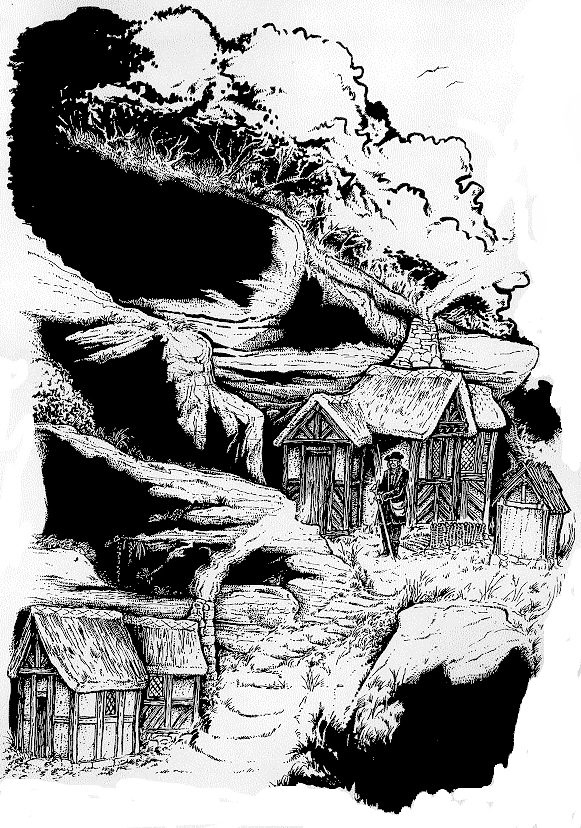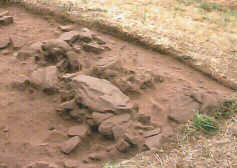The most picturesque incident connected with the site was recorded in a handbill published in 1810, which recorded the life of John Harris, called ‘The English Hermit’. According to the document,
“Mr John Harris, the hermit… was a Man possessed of a very great fortune… and took his abode in Dens and Caves in the Mountains, in which he has resided ever since, which is the space of about 66 years; occasioned by his Parents refusing him marriage with one Miss Ann Egerton, in the parish of Handley, whereof he made a solemn vow never to marry as long as he lived, and to have as little conversation with mankind as possible. The first place he made his abode in, was a Cave belonging to W. Leech, Esq., of Carden, in the County of Chester, in which place he resided for the space of 20 years and upwards… Mr. John Harris keeps a servant Man whose name is John Barlow, aged 69 years; he was born at Barnhill and has lived with Mr. Harris near 50 years; this is his second Servant since he took to this way of life…”
 Although
there were doubts in the later nineteenth century about the
authenticity of the account, there seems little reason to doubt
the accuracy of its outline. The cave John Harris is believed to
have occupied is the large cave at the southern end of the cliff.
That occupied by his manservant is said to have been the smaller
rock-shelter immediately to its north. The authority for
believing this is not known, though. The broadsheet makes a great
deal of John Harris’s piety, and a recent account claims
that he preached in the local villages, which seems unlikely
given his decision to retire from the company of other human
beings.
Although
there were doubts in the later nineteenth century about the
authenticity of the account, there seems little reason to doubt
the accuracy of its outline. The cave John Harris is believed to
have occupied is the large cave at the southern end of the cliff.
That occupied by his manservant is said to have been the smaller
rock-shelter immediately to its north. The authority for
believing this is not known, though. The broadsheet makes a great
deal of John Harris’s piety, and a recent account claims
that he preached in the local villages, which seems unlikely
given his decision to retire from the company of other human
beings.
Our excavations have shown that there is some mid-eighteenth century débris immediately in front of the main rock shelter. This includes scraps of pottery such as locally made slipwares and fragments of clay tobacco pipe. There was clearly somebody living here at the right time.
 There is also structural evidence for alterations to the shelter
around this time. As well as odd slots and holes in the floor of
the cave, there is the smoothing of the walls (which we had
originally attributed to the Regency period emparkment) and a
cobble platform in front of the cave mouth. There are postholes
in this platform together with a large post pad.
There is also structural evidence for alterations to the shelter
around this time. As well as odd slots and holes in the floor of
the cave, there is the smoothing of the walls (which we had
originally attributed to the Regency period emparkment) and a
cobble platform in front of the cave mouth. There are postholes
in this platform together with a large post pad.
It looks as if John Harris had a timber-framed front built across the mouth of the cave, making it a lot more comfortable. This is very different from the image we had originally formed of a wild man, shivering his way through a Cheshire winter! A rough drystone wall was found in 1997 and, although we were a bit sceptical about it at first (it was very rough!), we found a posthole in one corner of it in 1998. We suspect that it may have been part of some sort of outhouse, perhaps for storage or perhaps a toilet.